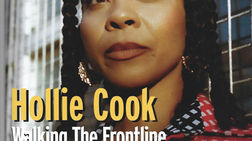Bobby Digital - X-Tra Wicked
- John Masouri
- May 10, 2018
- 6 min read
Updated: Dec 18, 2020
Bobby Digital is a classic example of someone who hides his light under a bushel, unless he's in the studio making music that is. With the release of not one but two volumes in VP Records' Reggae Anthology series, it felt like his time had finally come. Having spent many happy hours at his Kingston studio I was delighted to write these liner notes but then was deeply saddened to learn of his passing in 2020.


































Comments